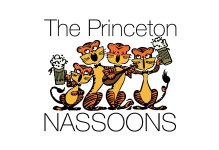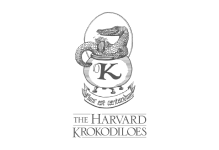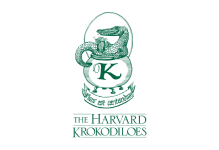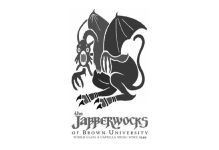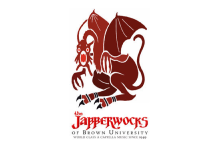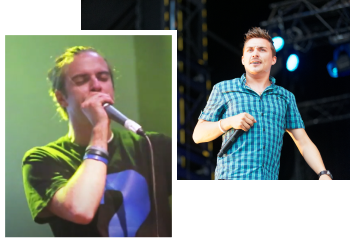
A Capella
Music & Theater
A Capella means to sing without instrumental accompaniment.
It is a style of music that relies solely on the human voice to produce a melodic sound and is a type of singing that has been dated back thousands of years to when humans first learned to communicate.
A cappella is often an extraordinary display of what talented singers and musicians can do with the one instrument they were born with- their voice!
This article will take you on a journey through the fascinating history of Cappella music, stopping by popular Cappella styles along the way.
Continue reading to learn more about this ancient art and the people that transformed it into the music we know and love today!
Prehistory of A Cappella
Many argue that a cappella singing dates back to the dawn of humanity. Scientists suggest that language was formed by people imitating sounds around them like birds chirping or tools clashing. It is a widespread belief that early human communication began with song!
There’s no doubt that singing and music bring a unique joy to humans and is an activity many spend a lot of time reveling in.
Perhaps this is because music ignites something within us that is still present from our past archaic selves. Singing is indeed a very human trait that traces back to the very beginnings of the human species.
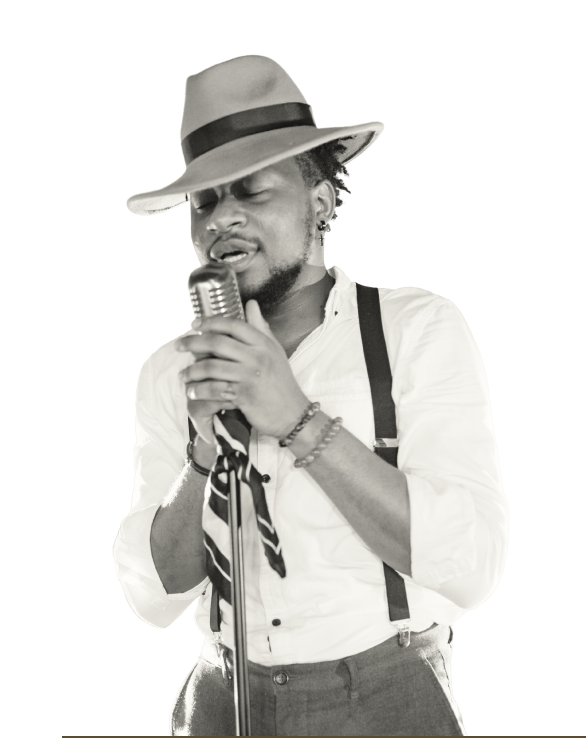

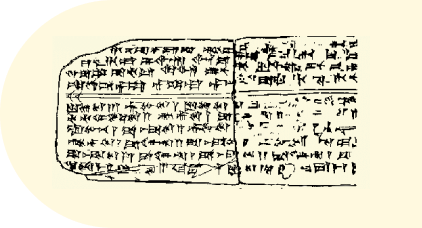
Ancient clay tablets hold the earliest record of human singing. Most were religious hymns which were very much the origin of a cappella singing as we know it today. Many historians consider “Hurrian Hymn No. 6” as the oldest notation of music, dating back to around the 14th century BC.
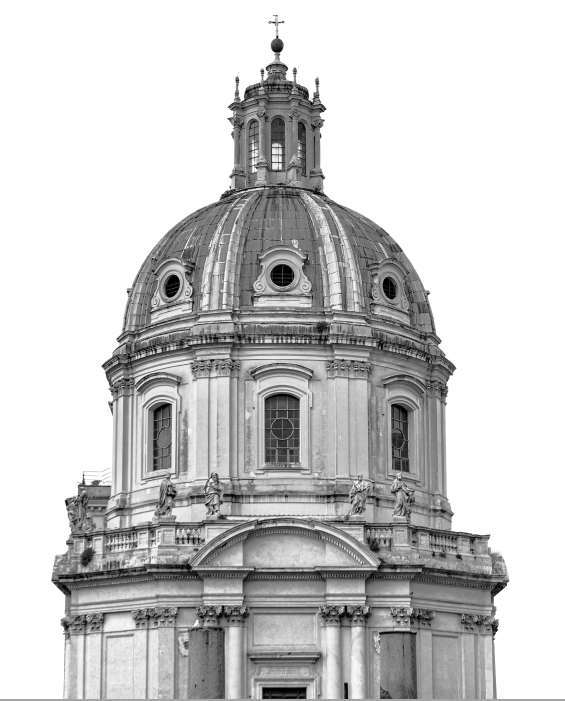
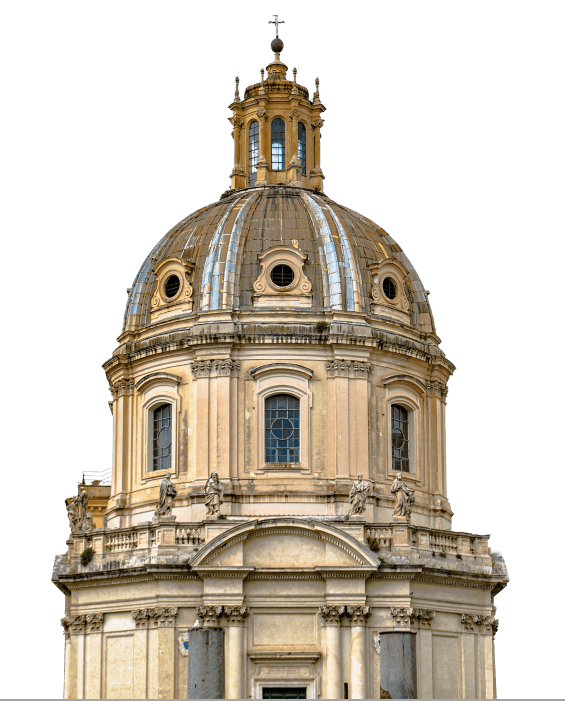
A cappella, as it is known today, stems from religious singing and can be traced back to ancient civilizations.
Byzantine Orthodox rites used only vocal music as an eight-tonne chant. It is an art form passed down through tradition and has existed for over 2,000 years. This vocal art intrinsically links to spirituality and religious worship, like many other Cappella sounds that have existed throughout countless cultures over thousands of years.
A Cappella’s Religious Origins
As we have briefly touched upon, a cappella undoubtedly has religious singing origins.
The term alla Cappella itself means “in the style of the chapel,” as this singing was primarily heard in churches.
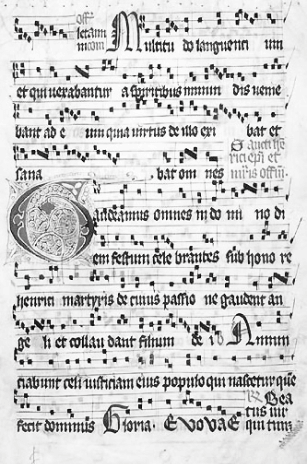
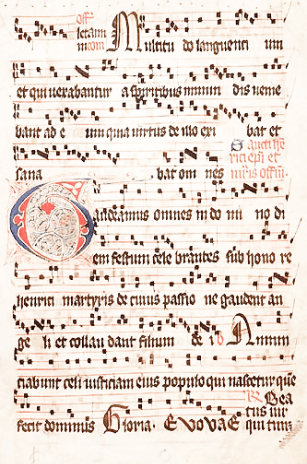
The Gregorian chant is an example of early ritualistic singing, traditionally sung in Roman Catholic churches by choirs as part of the liturgy during the Middle Ages. Christians did not practice instrumental music in worship for many centuries.
Christian Cappella Music
Christian a cappella music saw the development of polyphony in the late 15th century AD.
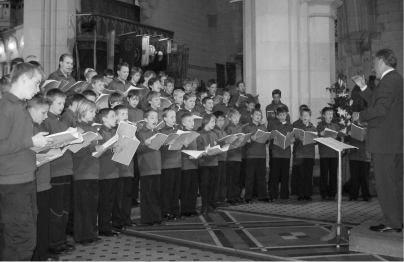
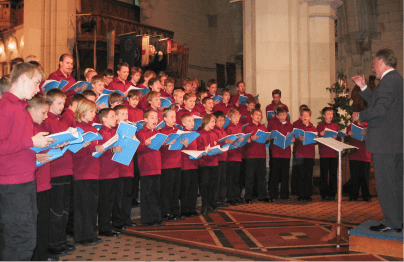
Polyphony is a technique that developed the sound of a cappella music we would be familiar with today. Polyphony is a musical texture that combines two or more melodies and plays them simultaneously.
Polyphony is a term that describes the music of the late Middle Ages and Renaissance periods.
Middle Age Barbershop Music
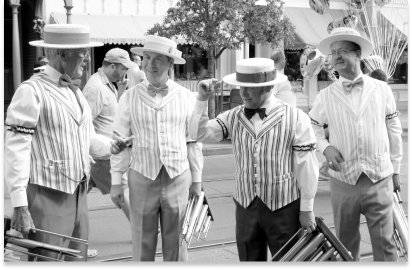
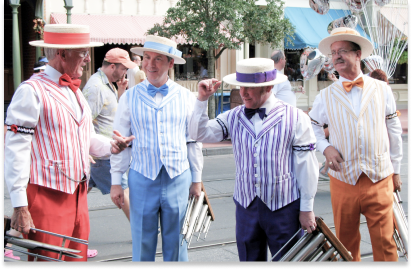
The Renaissance period saw the development of the madrigal, a type of polyphonic song with 2 to 8 voice parts. Later, this formed what we know as barbershop music, which typically has three voices harmonizing with the melody of a 4th voice.
Jewish Sabbath Songs
Christianity was not the only religion that used vocals as a form of ceremonial worship. Many religious communities insisted on the use of a cappella to sing hymns.
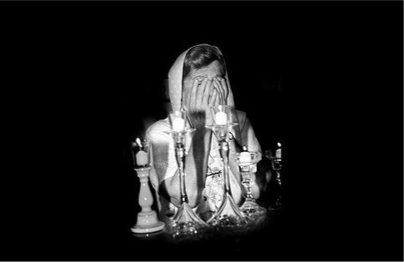
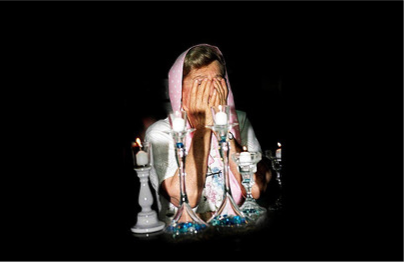
Traditional Jewish services in the Synagogue did not include musical instruments. Using musical instruments was forbidden on the Sabbath, but this rule is now relaxed in some congregations.
Jewish celebrations outside formal religious service often include Sabbath songs sung a cappella by group ensembles.
Cappella Music in Catholic Communities
Initially, Cappella traditions began in Europe; however, they quickly spread across the continent and became popular with Catholic communities in the New World.
A cappella in the United States
A Cappella’s popularity soared in the United States, particularly within the 19th century, when many American colleges started offering and supporting Cappella groups.
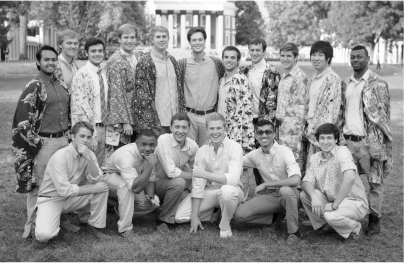
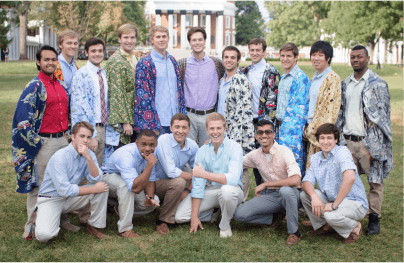
From this, the style developed into the sounds we know and love today. A cappella is still famous within gospel and choir music and offers an uplifting sound that fills your soul with joy.
A Cappella’s Popularity with Colleges in the United States
The 19th century saw the emergence of collegiate a cappella groups, primarily within the United States.
Some elite universities and colleges began offering students courses to sing a cappella at a collegiate level. With early a cappella forming as an American Gospel tradition in the US, it quickly spread into mainstream culture and spilled into the American pop landscape.
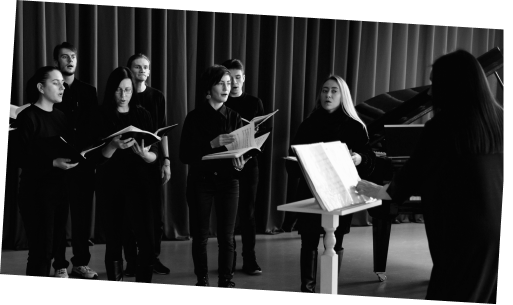
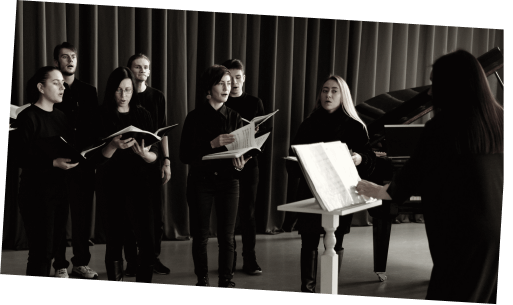
It is difficult to pinpoint the exact origins of college a cappella groups. It is thought that the Glee Club at Rensselaer Polytechnic Institute (or RPI Glee Club) is the oldest known collegiate a cappella group, established in 1873. However, Peter Christian Lutkin is more widely known to have popularized collegiate a cappella in 1906 by founding the Northwestern A Capella Choir.
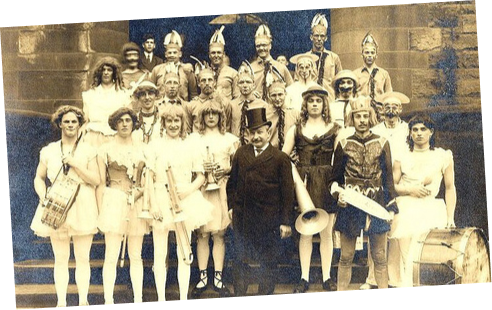
Yale University’s Whiffenpoofs are often regarded as the longest-running a cappella group,
initially formed in 1909 with broadway songwriter Cole Porter being a member at one time. The Whiffenpoofs were a Glee Club spin-off quartet that sang regularly at a campus restaurant.
Other collegiate a cappella groups soon sprung up, Like
These groups would sing their arrangements of popular songs, acquiring their distinct signature style over the years.
Collegiate a cappella groups were typically student-run rather than guided by a faculty member.
They differed from traditional Cappella groups as they would sing pop songs rather than a classical collection. Gatherings were often lighthearted and informal, keeping in tune with the kind of music they were creating.
After the popularity of collegiate a cappella groups, the music style has rapidly grown in modern years. The ease with which one can apply a cappella to any genre of music has brought a widespread appeal. Many popular styles formed in the late 20th century still exist today!

Barbershop
Barbershop music hit a wave of popularity in the mid-20th century, with particular acclaim in African-American communities.
Barbershop is a cappella style with four-part vocals and an emphasis on tight harmonies. Since it is a cappella style, barbershop music naturally lacks instrumental accompaniment, relying solely on the melodic vocals of the quartet.
Barbershop quartets are masters of harmonizing. The four singers join together in close harmony to form consonant chords for a texture-rich sound.
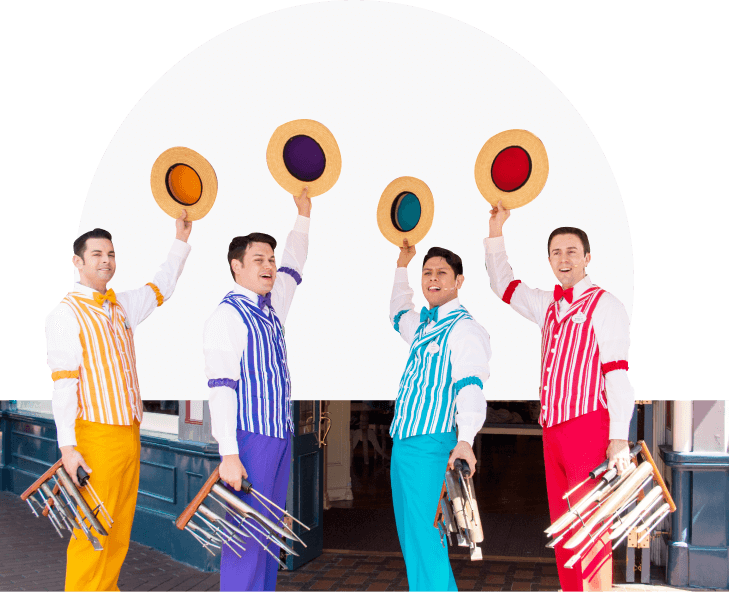
Defining features
Barbershop music is typically sung in groups of 4 all-male or all-female singers. Each of the four vocals plays a distinct role in the group.
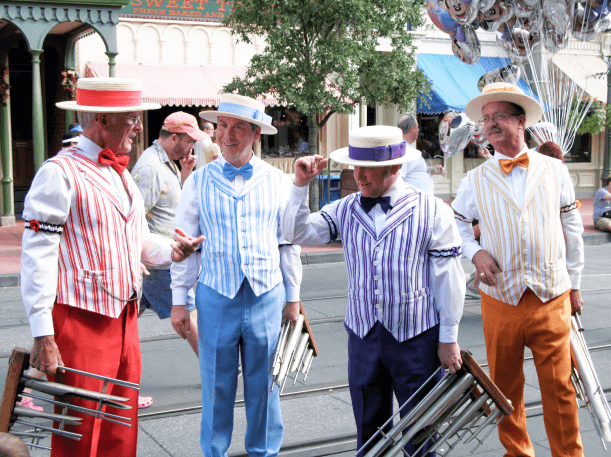
The lead singer carries the main melody of the song.
Tenor
The singer harmonizes above the lead.
Bass
The singer with the lowest voice provides the baseline and lowest note in the chord.
Baritone
The singer harmonizes below the lead, completing the chord.
One of the defining features of barbershop quartet music is the ringing chord.
This occurs when the overtones of the four voices enhance to create another distinct tone that the listeners can detect, even though none of the voices actually sing that note.
The History of Barbershop Music
Barbershop Organizations
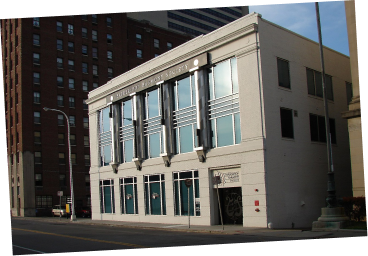
The Barbershop Harmony Society
The Barbershop Harmony Society (BHS), or Society for The Preservation and Encouragement of Barber Shop Quartet Singing in America (SPEBSQSA), was the first society of its kind to promote and preserve barbershop music as an art form in America.
Owen Clifton Cash
Owen Clifton Cash founded the organization in 1938 and was rebranded to the Barbershop Harmony Society in 2004.
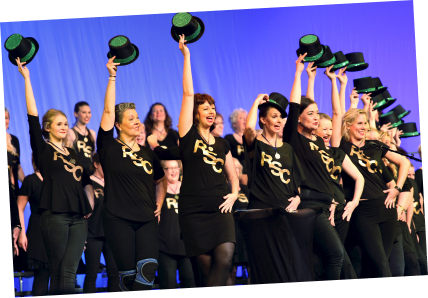
Sweet Adelines
A group of women who loved singing founded the first women’s barbershop organization, Sweet Adelines, in 1945. Although the group started small, it has since become an international organization, committing to the advancement of barbershops as a musical art form.

Doo-Wop
Doo-wop music is a style of a cappella known for using close harmony vocals and resides in the rhythm and blues genre.
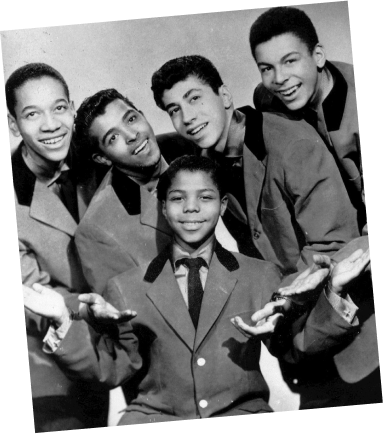
The style originated in African-American communities in large cities throughout the 1940s. The term doo-wop stems from the harmonic sounds made by the group to accompany the lead singer.
This kind of group harmonic singing soon became a cultural phenomenon in 1950s America due in part to the popularity of barbershop music earlier in the century. Doo-wop was a favored pastime for budding musicians in poorer communities who couldn’t afford extravagant instruments.
Defining features
Much like barbershop music, doo-wop features a vocal group harmony with a focus on ensemble singing.
Doo-wop is known for its splendid simplicity with syllables, beats, and lyrics. Although doo-wop centers on vocal harmonies, it also often features swing beats and light instrumentation throughout a song.
Doo-wop, perhaps most notably, uses nonsense syllables vocalized by the bass singers from which the name of the genre derives. In most doo-wop groups, the tenor will sing the melody, while a trio or quartet will back up the singer with vocal harmonies to provide the instrumentation.
The History of Doo-Wop Music
Doo-wop originated along the East Coast, with its popularity stretching from New York to Philadelphia.
It was a popular form of entertainment and an inexpensive, creative outlet for young African-Americans who grew up in poorer areas without access to music lessons. They would rehearse in schools, on street corners, and under bridges to find an available space with good acoustics.
As doo-wop rose in popularity, it was quickly picked up by other cultures, including Latin Americans and Italian Americans, who also grew up in rough neighborhoods. The influence of doo-wop is felt within rock, soul, and pop music of the 1960s and paved the road for R&B and other innovative genres.
Notable Doo-Wop Artists
Countless doo-wop groups made their mark on the American music scene with influential songs that hit the charts during the 1950s and 1960s.
The Mills Brothers
The Mills Brothers are just one example. This group began as a barbershop quartet, with their style slowly developing into a fusion of jazz and traditional pop. They made over 2,000 recordings and sold over 50 million copies.
The Penguins
The Penguins are another fantastic group of four African-American high school students from Los Angeles. Their song “Earth Angel” entered the top 10 on the 1954 Billboard charts, becoming the second doo-wop song to do so that year.

Beatboxing/ Vocal Percussion
Beatboxing is a form of vocal percussion in which a person imitates the sounds of a drum machine, turntable mixing, and other musical instruments.
Beatboxing is intertwined with hip-hop culture, with its mainstream form originating in New York during the 1970s and 1980s.
Although beatboxers typically provide the beat to accompany rappers, the art form can cross over many musical genres. Beatboxing is an ever-expanding and creative form of Cappella music.
Beatboxing as we know it today stemmed from underground hip-hop communities finding inexpensive ways to make a beat for their music, but some might say that it originated in traditional African music.
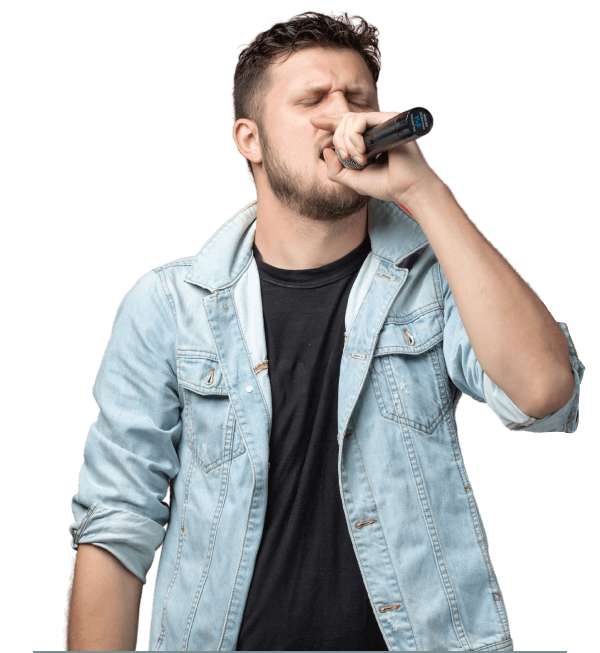
Defining features
Beatbox sounds are the art of emulating drum machines with one’s vocals.
Beatboxers can simultaneously imitate vocals, melodies, and bass lines to create the illusion of full-sounding polyphonic music.
They do all this while suppressing linguistic cues that indicate the human voice. Needless to say, beatboxing takes incredible skill and a vast knowledge of vocal techniques.

One of the defining features of beatboxing is the use of inhaled sounds, creating a continuous flow of music similar to continuous drum patterns.
While most singing and the vast majority of sounds are produced during exhalation, beatboxers can tap into new inhalation sounds that cannot be delivered well when exhaling.
The History of Beatboxing
Beatboxing came to be after people started imitating the futuristic sounds of the Roland TR-808, a drum machine released in 1980.
Rappers who couldn’t afford a drum machine would use the sounds produced by people’s vocals to accompany them as a percussion tool. Beatboxing soon became a massive influence on the hip-hop music community.
Since then, beatboxing has seen widespread popularity in mainstream culture. It has evolved past mimicking drum beats to inspire a new genre of music and is highly regarded as an art form. New school beatboxing uses intricate patterns with a focus on speed and bass-heavy sounds to produce a unique style of music.
Notable Artists
With the surge in mainstream popularity, beatboxing has seen some incredible talent that continues to thrive in modern society.
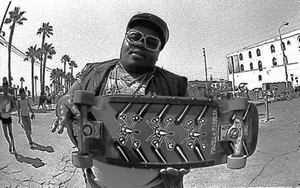
Darren ‘Buffy’ Robinson
Some influential names from the early days of beatboxing during the 1980s include Darren ‘Buffy’ Robinson. Buffy was a member of the hip-hop crew The Fat Boys and was skilled in bass-heavy breathing techniques.
The popularity of beatboxing continues on social media, with many young artists showing off their skills on YouTube to accumulate a following and community of like-minded people.

A Capella in Musical Theater
Few musical theater performances have been performed a cappella entirely. The notion itself is an interesting concept.
When one thinks of musical theater, powerful music numbers are the first thing that springs to mind.
Indeed, there is nothing more pleasing to the ears than a professional Cappella group working their musical magic.
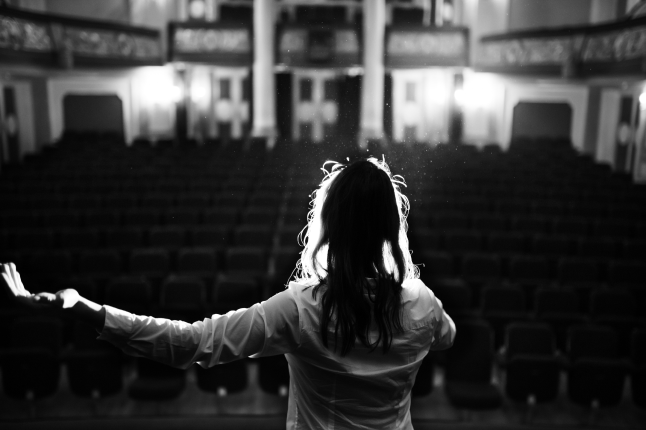
So why are Cappella-based musicals not more widely accepted?
Effectiveness over Time
Some may argue that Cappella music is most effective in shorter segments, with bright bursts of harmonic vocals and impressive talent. The imitation of instrumentals in Cappella music is a novelty that might wear thin after a continuous 2 hours in a theater.
Tone of The Show
There is also the expectation that musicals bring a dramatic orchestration that characterizes the show’s tone. This might be difficult to replicate without the backing of instrumental music.
Performance Style
Many have the deposition that a cappella better suits a concert-style performance rather than musical theater. This isn’t to say that a cappella has no place in musical theater; indeed, some musicals use Cappella singing as their primary focus and succeed!
Avenue X (1994)
Avenue X was an innovative Cappella musical with a cast of 8 actors and no orchestra.
The show opened in 1994 and was created by John Jiler and Ray Leslee. Despite the lack of instrumental music, this show was a feast for the ears.
The play was set in Brooklyn in 1963. It revolves around two young doo-wop singers from different cultural backgrounds pulling together to perform in a talent show at the legendary Fox Theater. Avenue X was an excellent display of talent, authenticity, and nostalgia, paving the way for a cappella in musical theater.
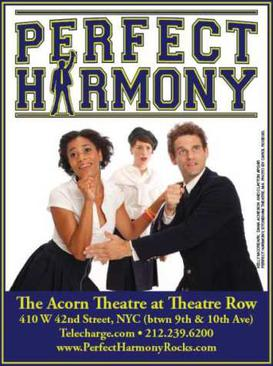
Perfect Harmony (2010)
Perfect Harmony is a cappella comedy musical that made its first off-broadway debut in 2010.
The story follows the most excellent high school, a cappella group, and eighteen-time national champions, the Acafellas.
We see them navigate relationships with their classmates and female counterparts, The Ladies in Red. The musical features Cappella renditions of popular pop music, including I Think We’re Alone Now and Hooked On A Feeling.
Perfect harmony played into the often cheesy, cheerful, and absurd nature of Cappella music with playful arrangements that played into the show’s comedic tone. The musical doesn’t lack heartfelt moments, however! The vocals featured in perfect harmony can have your heart swell one moment and bring you to tears of laughter the next.
In Transit (2010)
In Transit is another musical famous for its entire Cappella performance.
The story follows interrelated stories of New Yorkers in transit as they travel the city streets and subway.
In Transit pays homage to New York and the musical innovations that have stemmed there. It has a small group of characters whose lives are beautifully complex and multi-dimensional. The musical features an electrifying mix of musical genres and Cappella styles.

Contemporary A Cappella
We have looked at the history of a cappella and how it has evolved through different styles and genres over the years, but where does a cappella stand today, and where is it going?
A cappella has recently seen a resurgence in popularity, with films like Pitch Perfect and Glee shining a new light on the style.
A cappella is still a large part of American society, with dozens of incredible groups, each with its own unique sound. The versatility of this singing style is truly astonishing, showing how humans have utilized a primitive desire to make music using the nuances of their voices.
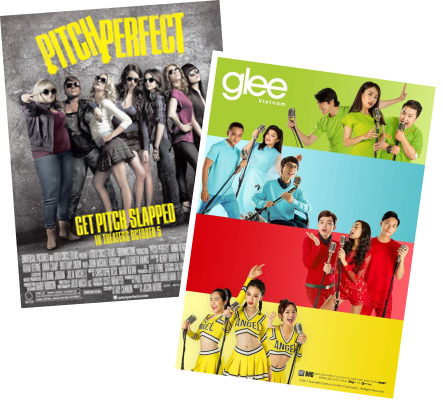
A Cappella In Contemporary Society
Many of the earlier Cappella styles discussed throughout this article are still prominent today. Many colleges throughout America still offer Glee clubs to students, and there are regular nationwide competitions. Many contemporary Cappella groups sing new renditions of popular songs with social media allowing for the rapid spread of new ideas and techniques.
The rise of online Cappella trends came with a surge of Cappella themes in mainstream media.
NBC premiered The Sing-Off in 2009, a cappella singing show that pitted ten groups with a range of skills and experience to find the ultimate team.
The show focused on each group’s talents, reminding the audience of what they were achieving with the sound of their voices. Of course, Glee’s cheerful Cappella recreations of popular music like “Teenage Dream” also had a cultural impact, bringing Cappella music to the forefront of people’s minds.
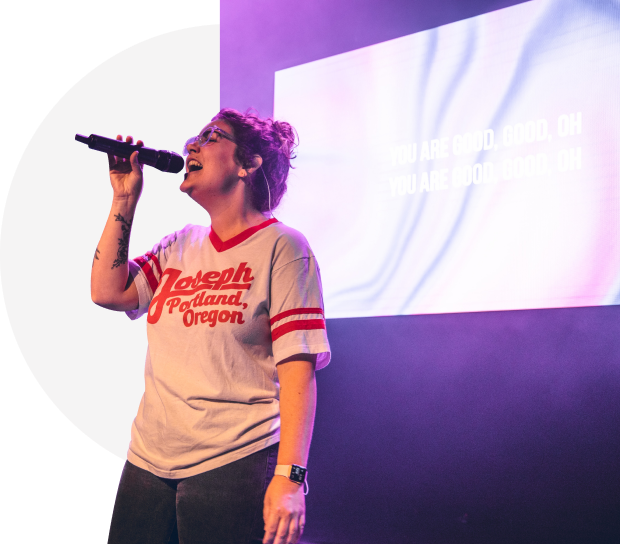
There is something inherently fascinating about Cappella music that captivates generations of people.
The way humans can imitate musical instruments or the high level of technical skill required to achieve polyphonic sound is undeniably enthralling. Nobody can say for sure where a cappella will go from here, but it is an ever-changing musical art form that enables endless bouts of creativity.
Contemporary A Capella Artists
With a large media following in the last decade, Cappella music has seen somewhat of a revival in contemporary society. There are hundreds of Cappella groups branching into dozens of styles and genres, but here are a few artists making a mark on the current musical landscape.
Pentatonix
Pentatonix is currently one of the most popular Cappella groups worldwide.
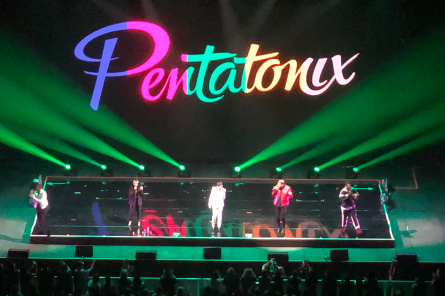
They are a five-member group from Arlington, Texas, and are characterized by compelling pop arrangements with gorgeous vocal harmonies, beatboxing, bass lines, and percussion.
Their music incorporates many Cappella styles to form their own unique sound. They were the season 3 winners of NBC’s The Sing-Off and have since won 3 Grammy Awards.
VoicePlay
VoicePlay is a renowned Cappella quintet group based in Orlando, Florida.
They made their musical debut on YouTube, performing arrangements of popular songs and catching the attention of The Sing-Off producers, where they became finalists for its 4th season.
Despite losing out on the win, VoicePlay has had an incredibly successful career, winning various awards, including the 2019 A Capella Music Awards Pop Group of the Year. The group has incredible song arrangements, often creating musical medleys with invited guests.
Voctave
Voctave is an 11-member Cappella group based in central Florida.
Their distinct vocals bring arrangements to life with roots in musical theater, Christian music, barbershop, choral, and pop music. As you can imagine, with such a diverse range of skills, techniques, and backgrounds, there isn’t much this group can’t do!
Voctave has an almost addictive sound that is difficult to believe they are achieving with only their voices. They have mastered their craft, and it certainly shows! On top of their wealth of achievements, Octave also has a popular YouTube account, accumulating over 150 million views.
Home Free
Home Free is an American Cappella band specializing in country-style music.
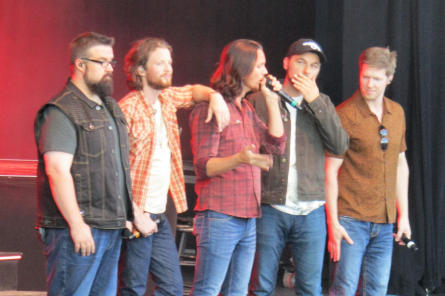
The group has five vocalists and won the 4th season of The Sing-Off. They are prevalent in America, touring with approximately 200 shows a year.
Home Free offers a different take on a cappella compared to most contemporary groups who typically sing pop music arrangements. They have a refreshing sound that beautifully blends a cappella and country music.
Home Free has a lead tenor, a baritone, a high tenor, a bass, and a beatboxer who provides the percussion vocals.

Their move towards country-style music developed over time after they found their audience responded well to it. By identifying themselves as country singers, the group grabbed the attention of The Sing Off’s casting director.

Conclusion
There is no doubt that Cappella music has taken over the music world both in the past and in recent years.
The versatility of this music style is bound only by the human body’s own limitations. Different techniques have emerged from a cappella singing over the years, from barbershop and doo-wop to beatboxing and pop.
Contemporary Cappella artists have found a unique way to blend these styles and incorporate them into different genres for a truly magical musical experience.

It is fascinating what humans have learned to accomplish with only their voices.
Much of this stemmed from a necessity, with youngsters and aspiring artists unable to afford fancy equipment or instruments. This led to the replication of instrumental sounds, and the rest grew from there.
When thinking about the brilliance of a cappella sound, it is important not to forget where it all started.
That is, with the evolution of humanity itself! It is thought that singing was the very beginning of human communication.
That music has been predisposed in all of us from the early prehistoric years. People used early forms of music as a means of spiritual connection and healing in many cultures. This brought us the gift of Cappella gospel music that was later transformed into sounds we are familiar with today.
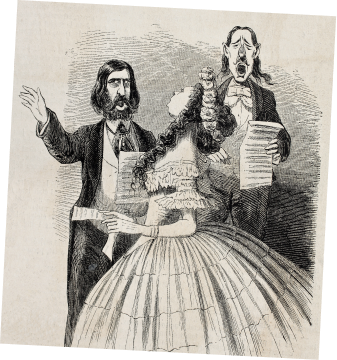

Modern media has shown appreciation for Cappella music.
Cultural phenomena like Glee and Pitch Perfect highlight the distinct talent and artistry a cappella sound can have.
Many professional Cappella groups have made their mark with endless displays of talent and continue to thrive as the music style picks up relevance in contemporary society.
With the dawn of social media, it has become easier than ever to find new upcoming Cappella groups that will continue to develop into new styles. The landscape of Cappella music is constantly evolving. Keep your eyes peeled for the next movement of Cappella songs in this new generation!
- What Is A Cappella Music : A look at a cappella music and how you would use it in a religious setting.
- A Vocal Basis for the Affective Character of Musical Mode in Melody : This article looks at how voice and history has affected different styles of music.
- Barbershop Harmony Society: This website provides information on barbershop music.
- The Origins of Barbershop Harmony: Read a detailed history of early barbershop music throughout the United States.
- History of Barbershop Music: (PDF) A brief history of barbershop music.
- An Historical Review of Barbershop Music and the Sight- Reading Methodology (PDF): This is a scholarly paper that examines how people learned to sing barbershop music.
- The Historical Roots of Barbershop May Surprise You (Video): This video gives a valuable background on barbershop music.
- A Guide to Producing an A Cappella CD: Learn the steps you will need to take to produce your own CD. This covers everything from choosing the best recording space to helping your singers stay in tune.
- Evolution of Music: Watch an a cappella performance that takes you through the history of music and demonstrates just how a cappella works across different genres of music.
- The ‘Cool’ Kids of College A Cappella: This article examines the a cappella movement across college campuses.
- Sweet Honey in the Rock: This PBS piece looks at the history of one of the earliest female a cappella groups.
- Sweet Adelines: This international women’s a cappella musical chorus has been gaining popularity.
- A Cappella History: Discover this brief history of the a cappella style of singing.
- History of Chant: Gregorian chants and other types of chant are discussed here.
- Why Is Chant Called Gregorian?: Find out the origins of the Gregorian Chant on this page.
- Brief History of Barbershop: The history of barbershop harmony and how barbershop is gaining popularity today.
- Best Small Recliner
- Home Theatre Seating
- Home Theater Loveseat
- Leather Recliner Theater Seating
- Power Recliners
- Home Theater Couch
- Cinemas Seating
- Recliners for Tall Person
- Recliner Theater
- Modern Home Theater
- Chairs Theater
- Two Theater Recliner Seats
- Great Sectionals
- Style Seats
- Theater Recliners Clearance Single
- Genuine Leather Movie Recliner
- Theater Seat Groupings
- Sofas Sets For Sale
- Contemporary Home Theater Chairs
- Build Your Own Sectional
- Types Of Theatre
- Movie Theater Sign
- Movie Theater Lights
- Top-Grain Leather
- Theater Room Carpet
- Theater Decor
- Corner Bass Traps
- Riser Platform
- Wine Glass Holders
- Cost To Build A Home Theater Room
- Wall Hugging Leather Recliners
- Diesel Xs950
- Gray Leather Sectional
- Home Theater Riser Height
- Heated Leather Seats
- Palliser Modular Sectional Sofa
- Home Theater Seating Tray Table
- Best Heat And Massage Recliners
- Brown Leather Furniture
- Heat Massaging Loveseat
- Movie Theatre Seats
- Home Theater Rooms
- Recliners for Sale Cheap
- Real Leather Theater Seating
- Palliser Theatre Seating
- Man Cave Area Rugs
- Small Media Room Ideas
- Modern Chairs for Sale
- Auditorium Seats for Sale
- Power Head Rest Furniture
- Reclining Chair With Head Positioning
- Sectional Sofa Small Living Room
- Fabric Cinema Seating
- Small Recliner Chairs
- Cheap Couch With Chaise
- Best Luxury Recliner
- How To Build A Riser Platform
- Sofa Styles
- Leather Sectionals With Chaise
- Couches With Cuddlers

